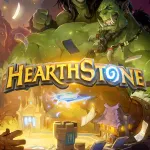Our extra-large special edition is here. Subscribe today and receive the 25% longer issue at no extra cost!
Hearthstone: Heroes of Warcraft Review

Blizzard’s foray into the burgeoning free-to-play digital collectible card game market is an ambitious one. Drawing upon many of the staples of collectible card game design with a focus on accessibility and modern sensibilities, Hearthstone succeeds as a standout example of where DCGs are headed. The genre has traditionally had knowledge and price entry barriers, but Hearthstone does for card games what World of Warcraft did for the MMORPG; it creates an accessible entry point with enough complexity and polish to cater to both casual and hardcore players.
New players are treated to a tutorial and as much comp-stomping against AI as they want, but the action officially starts with simple mechanics and a UI that’s unbelievably welcoming. Almost all interactions that players have with cards and objects on the board are intuitive. Hearthstone “feels” like a physical card game in digital space as players pick up, drop, and fling cards on the online table.
The basics of the game are simple – 30 card deck size, reduce the opponent’s life from 30 to zero before they do it to you. Players that can no longer draw cards take damage every time they would draw.
The resource system is streamlined. Players don’t need to play cards that give resources, they simply acquire one extra mana each turn to use. This sets a pace for each game that generally has both players ramping up into endgame win conditions while jockeying for board control and position. One may think that this sort of fixed resource gain would lessen the viability of rush decks or ramp decks that focus heavily on either side of the card cost spectrum, but Blizzard appears to have balanced things out masterfully, largely due to the addition of hero powers to fuel specific deck compositions.
You play as one of nine Warcraft hero archetypes, each with their own special cards specific to the class and a unique hero power. Hero powers all cost two mana, so they come online early in the game and can act as replacement plays if your hand is full of high-mana cards, and they can also weave into standard turns to save cards and gain an incremental advantage. The Warlock, for instance, is ideal for creating an aggressive deck, since the hero power allows a player to draw additional cards and keep the pressure on after playing a fistful of small “rush” creatures.
Game length is short – between five and fifteen minutes, depending on circumstances. Some of this is due to the fact that Hearthstone does not have any interaction with the opponent during their turns. Players only take action during their own turns, which creates a fast experience that will translate well to mobile platforms when the game launches on them later this year.
One of the excellent decisions Blizzard made with Hearthstone is the way it has set up its limited format, the Arena (which I expect to see in many digital card games moving forward). In the Arena, players pay an entry fee of in-game currency or cash to build a deck out of an assortment of cards and then play until they score 12 wins or 3 losses – whichever comes first. This is a wonderful changes from the traditional card game tournament structure, which has players stuck in the event from start to finish – a process that can take many hours, including waiting for other players to finish rounds. In Arena, players are free to leave whenever they wish, during both the deckbuilding process or between matches, and come back anytime to continue. A player can get a few wins and a loss, log off for days, and come back and continue the series. It’s an incredibly convenient take on one of the genre’s most popular formats.
| Unlocks And Extras |
| Hearthstone will launch Adventure mode sometime in the future. This single-player experience will pit the player against various AI encounters that will come with special card rewards. Dedicated players with 500 ranked wins within a class will unlock golden portraits and special animations, and a variety of card backs will unlock through various achievements. A love of World of Warcraft isn’t necessary to enjoy Hearthstone, but WoW players will earn a special mount by winning a few rounds of Hearthstone. |

Players complete daily quests and play matches to earn in-game currency that can be used to purchase packs or as Arena entry fees. Players can earn gold by playing, or opt for real-money purchases to quickly build a collection. The tournament and competitive scene has already taken off, with a heavy contribution coming from the game’s visibility on Twitch.tv. Hearthstone’s short, exciting match format makes it a compelling game to watch in snackable bites as a streaming offering. As some prominent players have already displayed, it’s entirely possible to become a top-ranked player without making any real-money purchases.
The digital card game will be seeing a lot of action in 2014 and beyond, and Hearthstone will be leading the charge as the genre gains more visibility in the PC and mobile space. If you’ve ever been curious about collectible card games but didn’t know where to begin, Hearthstone is the place to start.

Get the Game Informer Print Edition!
Explore your favorite games in premium print format, delivered to your door.
- 10 issues per year
- Only $4.80 per issue
- Full digital magazine archive access
- Since 1991










